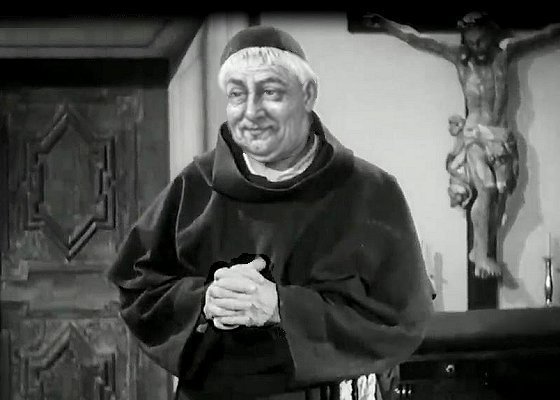|
|
Discovery of St.Tosia
St.Tosia is the Caribbean island Columbus forgot; where everything is as it is, it comes as it comes, and it all turns out in ecstasy. The tourism
board of St.Tosia advertises the island as "Gateway to High Happy Spirits". In staying with heraldry traditions, the official coat of arms of the
island has a banner with a motto that proudly states: "Caribbea, Creola et Caramba"
St. Tosia was discovered by coincidence in 1502 by Christopher Columbus on his fourth voyage to the New World. On 5 December 1502, Columbus and the
crews of the worm-eaten and badly leaking caravels 'La Capitana' and 'Santiago de Palos' found themselves in a hurricane unlike any they had ever
experienced. In his journal "The Navigator" wrote:
"For nine days I was as one lost, without hope of life. Eyes never beheld the sea so angry, so high, so covered with foam. The wind not only
prevented our progress, but offered no opportunity to run behind any headland for shelter; hence we were forced to keep out in this bloody ocean,
seething like a pot on a hot fire. Never did the sky look more terrible; for one whole day and night it blazed like a furnace, and the lightning
broke with such violence that each time I wondered if it had carried off my spars and sails; the flashes came with such fury and frightfulness
that we all thought that the ship would be blasted. All this time the water never ceased to fall from the sky; I do not say it rained, for it
was like another deluge. The men were so worn out that they longed for death to end their dreadful suffering."
When the storm eventually died down, they made sight of an island which they had not seen before and because of what they went through in the
days prior to the discovery; they called the newly discovered island St.Tosia after the Patron of the Martyrs of Dreadful Suffering.
Columbus dropped anchor in the bay and ordered two guns to be fired; but there was no response except from the echoes that went rattling among
the island's mountains, and from the frightened birds that rose screaming and circling from the shore. A party was sent ashore to prospect for
a site suitable for a new town which he intended to build. He didn't have a name for it yet. As Columbus set sail for further discoveries, some
of his crew members were left behind to build a settlement. They waited for the return of Columbus which never happened and they eventually
called it Puerto Olvidar, forgotten harbor, a sheltered and well-protected deepwater port.
The island St.Tosia doesn't appear on any map mainly due a phenomenon now known as 'compass variation'. Columbus had already discovered during his
previous expeditions that the angle between North as indicated by a magnetic compass and North as measured by the position of the pole star
changed with his position. He had also observed the diurnal rotation of the pole star in the sky, which he erroneously interpreted as evidence
that the Earth was not perfectly spherical, but rather bulged out like a pear.
Another anecdote says that Columbus and his sailors celebrated the victory over nature's challenges with the consumption of ample amounts of
spirits. Late at night when he returned to his Captain's Quarters, he was not sure where this island would fit in with all the other islands,
and he just threw a dart at the map that was hanging on the wall of his captain cabin. Instead, the dart hit the bust of Queen Isabella of Spain that
was standing on a shelf next to the map. "Big C" fell on his bed to sleep off the influence of spirits. And St.Tosia never appeared on any
maps and was never mentioned in any logs. Even in our modern days of high technology, Google Earth is not able to show it.
![]()
The fact that St.Tosia doesn't emerge on any map of the Caribbean was never an issue nor a surprise. It completely fits the overall
representation of Columbus that he didn't know where he was going, he didn't know where he was when he got there, and he didn't know where
he had been when he came home.
Over the course of the next 150 years, most islands in the region were claimed by many different nations and underwent numerous flag changes
in the struggle between the French, English, Dutch, Danes and Spanish for control of the West Indies. St.Tosia never received much attention.
Because of Columbus' mishap St.Tosia was not on any map anyway.
In the 17th century St.Tosia was believed to be a favorable hideout for pirates. The major colonial powers deported their 'undesirables' to live
in the Caribbean colonies and many became pirates taking haven on St.Tosia. The two greatest threats of any ship in the waters of the Caribbean
around St.Tosia were pirates and the weather during the hurricane season.
In 1622, the Spanish 110 foot heavily armed galleon "Nuestra Señora del Sol" was on course North towards the strong Gulf Stream to before turning
east when at the same latitude as Spain to bring her back to Europe. In the night of Monday, September 5th, the ship was hit by the full
impact of a tropical storm from the Northeast. With its sails and rigging reduced to shreds and masts and tillers battered or broken. The seas
were mountainous and for safety most everyone was below deck seasick or in prayer. The ship drifted helplessly toward the notorious dangerous
Attorador Reef, 10 miles East of St.Tosia. The "Nuestra Señora del Sol" being lifted high on a wave and smashed violently on the reef. She sunk
instantly, pulled to the bottom of the deep underwater trough by her heavy cargo of treasure and cannons.
![]()
The next day, a small fishing boat from St.Tosia making its way through the debris rescued two survivors, both priests, clinging to the ship's
mizzenmast and still praying hard. They were all that was left of 265 passengers and crew, among who were wealthy travelers and an entire company
of 82 infantry soldiers to defend the vessel from possible enemy or pirate attacks and boarding. The wreck with its treasure of gold and silver
has not been found yet.
As an act of gratitude for their survival, the two priests, Padre Francesco and Padre Vicência constructed a simple chapel on Kalinago Hill, on
top of an older abandoned pagan site of the Carib Indians on the most northern part of St.Tosia. Realizing that they landed in a pirate nest
of scoundrels, scallywags and scurvy dogs, they decided to bring some order and decency to the island and established a new Order called the
"Catharsians" which derives from the Greek word "Cartharsis" meaning cleansing or emotional cleansing. They started to build up a mission
geared towards a new spiritual act and task of conversing pirates.
After Padre Francesco had received his Holy Orders as a priest he was sent to "New Spain". He opposed slavery and compulsory hard labor. On any
other location in the New World than St.Tosia it would have caused great controversy among co-missionaries, many of whom acted according to the
laws imposed by Spain. Slaves who were able to escape tried to reach St.Tosia where they would find refuge under the protection of the
Catharsis Monastery. They were free, no slavery ever on St.Tosia. Many of them joined the Order of Catharsians. Also women who were
captured by the pirates and were ill-treated by them were welcome in the monastery. The pirates were happy to get rid of some of the
wicked wenches. After all "ye gents ne'er want to be 'round a wench stronger than ye". Whereas many missions in the New World conquests
had to deal with a shortage of missionaries and often went without Christian instruction for long periods of time, St.Tosia was progressing.
Padre Vicência died a year after his arrival on the island from crab louse infection which remains a bit of a mystery as the disease is spread
through sexual intercourse.
in 1625, Padre Francesco who was now called Prior Francesco wrote a constitution called "STATVTA, DECREATA, AC ORDINAMENTA ILLVSTRIS
REIPVBLICAE AC PERPETVAE LIBERATIS TERRAE SANCTI TOSIA". In confusing times, on July 4th of 1625, St.Tosia had become the first independent
island nation in the Caribbean and called itself the "Most Serene Monastic Republic of St.Tosia". In fact it was a privateering
stronghold with a 'fleet' of 3 ships: the 24 gun frigate "Rosa Nostra", the 18 gun corvette "Lavian Rose", and the 4 gun sloop "Swagger",
and the blessings of a monastery on top of a hill.
| the Right Reverend Prior Francesco |
|
 |
Consumed with the various wars in Europe, the colonial powers provided few military reinforcements to their overseas territories. , The cost of
maintaining a fleet to defend the colonies was beyond national governments of the 16th and 17th centuries. Private vessels were commissioned
into a 'navy' with a "Letter of Marque", paid with a substantial share of whatever they could capture from enemy ships and settlements, the
rest going to the crown. The use of privateers became increasingly popular.
The pirates of St.Tosia received a "Letter of Marque" from Prior Francesco on behalf of the "Most Serene Monastic Republic of St.Tosia", a
symbol of legitimacy to plunder any ship of a given nation. Having the blessing of a clergyman and being able to keep a good share of the
booty created a win-win situation. The ship crews became rich for life. Through the increased wealth of the loot, the Monastery could expand
its activities. The friars of the Order of Catharsians strengthened their influence on the behavior of what once were sinners who now became
"Gentlemen of Fortune", a slightly more positive term for pirates, yet they were ferocious in combat and were reputed to be experts with
flintlock weapons.
The Catharsian Prior had taught the Pirates: "No pray, no prey and no prey, no pay" And so before any raid the pirates would come to the Chapel
of the monastery and asked the Prior to lead them in a short prayer and after his "Guide us with Thy mighty hand, Amen" all attendees of the
service yelled: "Weigh anchor! Hoist the mizzen!!!" which basically means "Let's go for the booty!"
Prior Francesco had an unusual amount of wealth for his vocation, which he used his primarily to fund his missionary activities and building
the monastery. His contemporaries reported on his wealth with suspicion and called him the "Pirate Prior of St.Tosia".
The sale of captured goods was a boost to the St.Tosian economy. The large harborage, independency and status as a free port with no customs
duties were all factors in St.Tosia becoming a major point of transshipment of goods, and a locus for trade in contraband. The economy
flourished by ignoring the trade embargoes between the great powers. Wealthy businessmen or nobles from abroad were quite willing to finance
this legitimized piracy in return for a share something that is still done until now in the 21st century. "Gentlemen of Fortune" is still an
appropriate designation for them. Offshore investing and offshore banking have their roots in St.Tosia.
Cdr. Bud Slabbaert
|
 |
|
|
|